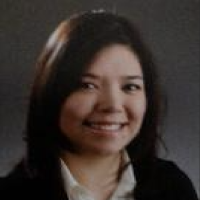Research Article
Review
Book Review
Aim & Scope
Journal of Bucak Business Administration Faculty covers scientific articles produced in subtopics of business administration such as management and strategy, organizational theory, human resources management, organizational behavior, production management, marketing, accounting, finance. Besides, statistics, econometrics, and operations research topics are also evaluated within the scope of journal as long as articles related to business science.
Author Guidelines
Author Guidelines
• All articles should be written using Microsoft Word software program on A4 paper (210 x 297 mm) with 2.5 cm margins from each side.
• The typeface should be Times New Roman. Title of the study (Turkish / English) must be in 14-point size. All the other parts must be written in 12-point size, with 1.5-line space and justified. In indentation section of paragraphs of Word software program, first line option should be selected as 1.25 cm.
• Articles should not have page numbers.
• Turkish and English titles of the article should be written in bold, centered on the page and not exceed 16 words. The first letters of the titles should be capital.
• Turkish abstract should exist in English studies and vice versa. The abstract should not exceed 250 words and should be justified. There should be at least 3 and maximum 5 keywords under the abstracts.
• Starting from the introduction, all sections should be numbered. The numbering should be like 1., 1.1. 1.2, 1.3 and there should be no indent.
• Tables and figures should fit on a single page by reducing up to 8 points when necessary, and be centered. Tables and figures that do not fit on a single page should be shown at the end of the work in appendix section. The sources of the tables /figures in the text should be given under the tables /figure. Numbers of tables and figures should be listed and the titles should be placed above the table and below the figure. Only the first word of the table and figure titles should start with a capital letter and should be centered.
• References should be listed alphabetically with the name "REFERENCES" after the conclusion and before the appendixes without numbering.
• APA 7 style should be used in in-text citations and references.
Reference Examples
Journal Article
Grady, J. S., Her, M., Moreno, G., Perez, C., & Yelinek, J. (2019). Emotions in storybooks: A comparison of storybooks that represent ethnic and racial groups in the United States. Psychology of Popular Media Culture, 8(3), 207–217. https://doi.org/10.1037/ppm0000185
• Parenthetical citation: (Grady et al., 2019)
• Narrative citation: Grady et al. (2019)
Newspaper Article
Carey, B. (2019, March 22). Can we get better at forgetting? The New York Times. https://www.nytimes.com/2019/03/22/health/memory-forgetting-psychology.html
Harlan, C. (2013, April 2). North Korea vows to restart shuttered nuclear reactor that can make bomb-grade plutonium. The Washington Post, A1, A4.
Stobbe, M. (2020, January 8). Cancer death rate in U.S. sees largest one-year drop ever. Chicago Tribune.
• Parenthetical citations: (Carey, 2019; Harlan, 2013; Stobbe, 2020)
• Narrative citations: Carey (2019), Harlan (2013), and Stobbe (2020)
Whole Authored Book
Jackson, L. M. (2019). The psychology of prejudice: From attitudes to social action (2nd ed.). American Psychological Association. https://doi.org/10.1037/0000168-000
Sapolsky, R. M. (2017). Behave: The biology of humans at our best and worst. Penguin Books.
• Parenthetical citations: (Jackson, 2019; Sapolsky, 2017)
• Narrative citations: Jackson (2019) and Sapolsky (2017)
Whole Edited Book
Kesharwani, P. (Ed.). (2020). Nanotechnology based approaches for tuberculosis treatment. Academic Press.
Torino, G. C., Rivera, D. P., Capodilupo, C. M., Nadal, K. L., & Sue, D. W. (Eds.). (2019). Microaggression theory: Influence and implications. John Wiley & Sons. https://doi.org/10.1002/9781119466642
• Parenthetical citations: (Kesharwani, 2020; Torino et al., 2019)
• Narrative citations: Kesharwani (2020) and Torino et al. (2019)
Republished Book, with Editor
Watson, J. B., & Rayner, R. (2013). Conditioned emotional reactions: The case of Little Albert (D. Webb, Ed.). CreateSpace Independent Publishing Platform. http://a.co/06Se6Na (Original work published 1920)
• Parenthetical citation: (Watson & Rayner, 1920/2013)
• Narrative citation: Watson and Rayner (1920/2013)
Several Volumes of a Multivolume Work
Harris, K. R., Graham, S., & Urdan T. (Eds.). (2012). APA educational psychology handbook (Vols. 1–3). American Psychological Association.
• Parenthetical citation: (Harris et al., 2012)
• Narrative citation: Harris et al. (2012)
Chapter in an Edited Book
Aron, L., Botella, M., & Lubart, T. (2019). Culinary arts: Talent and their development. In R. F. Subotnik, P. Olszewski-Kubilius, & F. C. Worrell (Eds.), The psychology of high performance: Developing human potential into domain-specific talent (pp. 345–359). American Psychological Association. https://doi.org/10.1037/0000120-016
Dillard, J. P. (2020). Currents in the study of persuasion. In M. B. Oliver, A. A. Raney, & J. Bryant (Eds.), Media effects: Advances in theory and research (4th ed., pp. 115–129). Routledge.
• Parenthetical citations: (Aron et al., 2019; Dillard, 2020)
• Narrative citations: Aron et al. (2019) and Dillard (2020)
Entry in a Print Dictionary
American Psychological Association. (2015). Mood induction. In APA dictionary of psychology (2nd ed., p. 667).
Merriam-Webster. (2003). Litmus test. In Merriam-Webster’s collegiate dictionary (11th ed., p. 727).
• Parenthetical citations: (American Psychological Association, 2015; Merriam-Webster, 2003)
• Narrative citations: American Psychological Association (2015) and Merriam-Webster (2003)
Report by a Government Agency References
National Cancer Institute. (2019). Taking time: Support for people with cancer (NIH Publication No. 18-2059). U.S. Department of Health and Human Services, National Institutes of Health. https://www.cancer.gov/publications/patient-education/takingtime.pdf
• Parenthetical citation: (National Cancer Institute, 2019)
• Narrative citation: National Cancer Institute (2019)
Report with Individual Authors References
Baral, P., Larsen, M., & Archer, M. (2019). Does money grow on trees? Restoration financing in Southeast Asia. Atlantic Council. https://www.atlanticcouncil.org/in-depth-research-reports/report/does-money-grow-on-trees-restoring-financing-in-southeast-asia/
Stuster, J., Adolf, J., Byrne, V., & Greene, M. (2018). Human exploration of Mars: Preliminary lists of crew tasks (Report No. NASA/CR-2018-220043). National Aeronautics and Space Administration. https://ntrs.nasa.gov/archive/nasa/casi.ntrs.nasa.gov/20190001401.pdf
• Parenthetical citations: (Baral et al., 2019; Stuster et al., 2018)
• Narrative citations: Baral et al. (2019) and Stuster et al. (2018)
Conference Presentation
Evans, A. C., Jr., Garbarino, J., Bocanegra, E., Kinscherff, R. T., & Márquez-Greene, N. (2019, August 8–11). Gun violence: An event on the power of community [Conference presentation]. APA 2019 Convention, Chicago, IL, United States. https://convention.apa.org/2019-video
• Parenthetical citation: (Evans et al., 2019)
• Narrative citation: Evans et al. (2019)
Abstract of a Conference Presentation
Cacioppo, S. (2019, April 25–28). Evolutionary theory of social connections: Past, present, and future [Conference presentation abstract]. Ninety-ninth annual convention of the Western Psychological Association, Pasadena, CA, United States. https://westernpsych.org/wp-content/uploads/2019/04/WPA-Program-2019-Final-2.pdf
• Parenthetical citation: (Cacioppo, 2019)
• Narrative citation: Cacioppo (2019)
Unpublished Dissertation or Thesis References
Harris, L. (2014). Instructional leadership perceptions and practices of elementary school leaders [Unpublished doctoral dissertation]. University of Virginia.
• Parenthetical citation: (Harris, 2014)
• Narrative citation: Harris (2014)
Film or Movie
Fleming, V. (Director). (1939). Gone with the wind [Film]. Selznick International Pictures; Metro-Goldwyn-Mayer.
• Parenthetical citation: (Fleming, 1939)
• Narrative citation: Fleming (1939)
YouTube Video
Asian Boss. (2020, June 5). World’s leading vaccine expert fact-checks COVID-19 vaccine conspiracy: Stay curious #22 [Video]. YouTube. https://www.youtube.com/watch?v=WQdLDMLrYIA
Harvard University. (2019, August 28). Soft robotic gripper for jellyfish [Video].YouTube. https://www.youtube.com/watch?v=guRoWTYfxMs
• Parenthetical citations: (Asian Boss, 2020; Harvard University, 2019)
• Narrative citations: Asian Boss (2020) and Harvard University (2019)
Webpage on a News Website
Bologna, C. (2019, October 31). Why some people with anxiety love watching horror movies. HuffPost. https://www.huffpost.com/entry/anxiety-love-watching-horror-movies_l_5d277587e4b02a5a5d57b59e
Roberts, N. (2020, June 10). Trayvon Martin’s mother, Sybrina Fulton, qualifies to run for elected office. BET News. https://www.bet.com/news/national/2020/06/10/trayvon-martin-mother-sybrina-fulton-qualifies-for-office-florid.html
Toner, K. (2020, September 24). When Covid-19 hit, he turned his newspaper route into a lifeline for senior citizens. CNN. https://www.cnn.com/2020/06/04/us/coronavirus-newspaper-deliveryman-groceries-senior-citizens-cnnheroes-trnd/index.html
• Parenthetical citations: (Bologna, 2019; Roberts, 2020; Toner, 2020)
• Narrative citations: Bologna (2019), Roberts (2020), and Toner (2020)
For more information, you can visit https://apastyle.apa.org/style-grammar-guidelines/references
Ethical Principles and Publication Policy
Ethical Principles
For the Authors
• The research being reported should have been conducted in an ethical and responsible manner and should comply with all relevant legislation.
• Researchers should present their results clearly, honestly, and without fabrication, falsification or inappropriate data manipulation.
• Researchers should strive to describe their methods clearly and unambiguously so that their findings can be confirmed by others.
• Researchers should adhere to publication requirements that submitted work is original, is not plagiarised, and has not been published elsewhere.
• Authors should take collective responsibility for submitted and published work.
• The authorship of research publications should accurately reflect individuals’ contributions to the work and its reporting.
• Funding sources and relevant conflicts of interest should be disclosed.
For the Reviewers:
• Reviewers should evaluate the studies of the authors from an honest, impartial and scientific perspective.
• The reviewers are responsible for keeping information about the study of the authors confidential.
• The reviewers should inform the editorial board when they encounter situations that do not comply with ethical rules, scientific perspectives and violate the rules of plagiarism in any study.
For the Editors
• Editors should make fair and unbiased decisions independent from commercial consideration and ensure a fair and appropriate peer review process
• Editors should adopt editorial policies that encourage maximum transparency and complete, honest reporting
• Editors should guard the integrity of the published record by issuing corrections and retractions when needed and pursuing suspected or alleged research and publication misconduct
• Editors should pursue reviewer and editorial misconduct
• Editors should critically assess the ethical conduct of studies in humans and animals
• Peer reviewers and authors should be told what is expected of them
• Editors should have appropriate policies in place for handling editorial conflicts of interest
Publication Policy
Publication Review Period
The publication review process of the submitted articles is completed in about 3 months.
Publication Language
Turkish and English.
Publication Fee
Authors are not charged for the publication of the articles in our journal.
Plagiarism Checking
In our journal, iThenticate software is used to determine the similarity rate. Articles with plagiarism reports over 20% are rejected.
Publication Process
Articles submitted to Burdur Mehmet Akif Ersoy University Journal of Bucak Business Administration Faculty are examined in a three-step process: "Preliminary Review", "Review" and "Editing". These processes are planned and implemented by the editorial board.
1- Preliminary Review Process
It is the general review made by the editorial board after the submission of the article by the author. In this context, the scope of the article, the suitability of the similarity ratio, the completion of the required documents, the compliance of the article with the author guidelines, the appropriateness and timeliness of the citations are examined. According to examination, the authors are asked to compansate for shortcomings if their articles do not meet the criteria mentioned above. The articles meeting the preliminary review criteria are transferred to the review stage.
2- Review Process
In this process, the articles are forwarded to two referees who are experts in their field to be determined by the editorial board. During the review process “double-blind review method” is applied, which means that both the reviewer and author identities are concealed from the reviewers, and vice versa, throughout the review process. The referees inform the editorial board whether they can evaluate the work within 15 days after the article is sent to them. If the referee does not make a notification within the specified time or if he / she cannot evaluate it, a new referee is appointed for the study. The period given to referees for the review process is 30 days. At the end of this process, the referees can request it to be published as it is, give minor or major corrections or decide that it cannot be published.
Referees take into account the following criteria while making their decisions: The scientific quality of the article, its original contribution to the relevant discipline, compliance with the preparation systematic, compliance with scientific writing rules, consistency of title and content, the degree of benefiting from the literature, revealing the problem and the purpose of the study, the adequacy of the abstract prepared in both Turkish and English, comprehensibility of the language, the adequacy of the research method used, the understandability of the tables and figures added to the research, and inferring sufficient conclusions from the findings.
In cases when the referee requests a correction, the authors are expected to make changes in their study in line with the referee's comments and upload the study to the system as soon as possible. The referees examine the corrections made by the author and may decide whether they are appropriate or, if necessary, request corrections more than once. The corrected study is re-evaluated by the referees who want changes or corrections when necessary. In case of discrepancy in the referee reviews, the editorial board sends the study to another referee. If two referees report that the article is publishable then the articles are passed to the editing phase. On the other hand, getting negative reports from two referees leads to the rejection of the study. The editorial board decides on the publication of the studies in line with the referee opinions.
3- Editing Process
The typesetting and editing of articles is done during the editing process.
Article Withdrawal
A study whose referee review process has been initiated cannot be withdrawn by the author. In accordance with our Journal Publication Policy, withdrawal is carried out only in accordance with the decision made by the editorial board, if a reasoned petition signed by each author is sent. Unless the withdrawal request is approved by the editorial board, authors cannot send their study to another journal for evaluation.
Indexes
Other Indexes
Journal Boards
Editorial Board

Editor

Assistant Editors

 Web
Web





 Web
Web
Field Editors



Prof. Dr. H. Nejat Basım is a faculty member in the Department of Business Administration at the Faculty of Economics and Administrative Sciences, Başkent University.
He completed his undergraduate, master’s, and doctoral studies in Business Administration and was awarded the title of Associate Professor in Management and Organization in 2008. Prior to joining Başkent University, he served as a faculty member at the Turkish Military Academy (National Defence University – Army War College). Following his retirement in 2008, he joined Başkent University.
Prof. Dr. Basım was promoted to Full Professor in 2013. Between 2015 and 2023, he served as the Dean of the Faculty of Economics and Administrative Sciences at Başkent University.
His teaching and research interests include organizational behavior, human resource management, strategic management, and organizational theory. In addition to his academic activities, he provides executive and professional training programs for public and private sector organizations in areas such as leadership and effective management, communication and human relations, teamwork, workplace motivation, organizational culture and commitment, protocol and social etiquette, and behavioral dynamics in organizations.
Prof. Dr. H. Nejat Basım has published numerous academic studies at both national and international levels.

Broadcasting/Scientific/Advisory Board

Dragan Pamucar is a Full Professor at the University of Belgrade, Faculty of Organizational Sciences. Dr. Pamucar received a PhD in Applied Mathematics specializing in Multi-criteria modeling and soft computing techniques from the University of Defence in Belgrade, Serbia, in 2013 and an MSc degree from the Faculty of Transport and Traffic Engineering in Belgrade in 2009. His research interests include computational intelligence, multi-criteria decision-making problems, neuro-fuzzy systems, fuzzy, rough, intuitionistic fuzzy set theory, and neutrosophic theory. Application areas include a wide range of logistics and engineering problems. Dr. Pamucar has five books and over 220 research papers published in SCI indexed International Journals, including Experts Systems with Applications, Applied Soft Computing, Soft Computing, computational Intelligence, Computers and Industrial Engineering, Engineering Applications of Artificial Intelligence, IEEE Transactions on Intelligent Transportation Systems, IEEE Transactions of Fuzzy Systems, IEEE Transactions on Transportation Electrification, Information Sciences and research and so on, and many more. According to Scopus and Stanford University, he is among the World's top 2% of scientists as of 2020 and 2021. According to WoS and Clarivate, he is among the top 1% of highly cited researchers in 2022 and 2023.

Junus Ganiev received his M.S. and PhD degree in Economics from the Kyrgyz - Turkish Manas University. He carried out his master’s thesis on inflation dynamics and doctoral thesis on corruption. He conducts research on monetary policy, international economic relations, economic growth and development. He has attended international conferences in many countries. He has journal articles, book chapters, books, conference papers. He is a full-time Associate Professor at Kyrgyz-Turkish Manas University, Department of Economics, Faculty of Economics and Management. ORCID: 0000-0001-8859-5464 (Djal, Campus of Chyngyz Aitmatov, Bishkek, 720038, Kyrgyzstan, +996772 331193, junus.ganiev@manas.edu.kg)




 Web
Web

Monika Moraliyska is an Associate Professor in the Department of International Economic Relations and Business at the University of National and World Economy in Sofia, Bulgaria. Currently she is Deputy Head of the Department. She conducts research in international economics, international trade, world economy, European economy and integration, and European institutions. She has published widely in the fields of European integration and international trade and regional economic integration in southeast Europe. She is also deeply interested in social policy and, in recent years, has explored comprehensively the social dimension of the European Union. She obtained her Ph.D. in European Economic Integration in 2011 from the University of National and World Economy.
Latest contributions
Robot carrying glass ball showing CO2 emissions
VoxEU Column
Fostering a sustainable digital transformation
Ana L. Abeliansky David Bloom Filippo Bontadini Emanuel Gasteiger Pedro Mazeda Gil Michael Kuhn Monika Moraliyska Catarina Peralta Klaus Prettner
13 Jun 2023  Climate Change  Labour Markets  Productivity and Innovation
Themes & Current Issues
Business Cycles
Central Banking
Climate Change
Competition Policy
COVID-19
Development & Growth
Economic history
Energy
EU Economic Architecture
Exchange Rates
Finance and Fintech
Financial Markets
Financial Regulation and Banking
Health Economics
Inflation
International Finance
International trade
Labour Markets
Migration
Monetary Policy
Political Economy
Poverty and Income Inequality
Productivity and Innovation
Taxation
Ukraine Initiative
Women in Economics
Sign up to our newsletter
Your email address
follow us
Copyright 2025 CEPR /designbysoapbox.com
Contact Us
Cookies
Privacy Policy
RSS Feeds
We use cookies on this site to enhance your user expe

Azamat Maksüdünov (Ph.D.) is an educator with over a decade of experience in the field of business academia. He is a Fulbright Visiting Scholar at Florida Atlantic University for the academic year 2023-2024. Currently, he is a full-time associate professor at Kyrgyz - Turkish Manas University, Department of Management, Faculty of Economics and Management. Dr. Maksüdünov has authored or co-authored 44 articles, 40 conference papers, 10 book chapters, and 4 books. He received the Best Paper Award at the 26th World Business Congress organized by the International Management Development Association (IMDA) in May 2016, as well as a Certificate of Honor from the Ministry of Education and Science of Kyrgyzstan in December 2021.









Nezihe figen Ersoy currently works at the Department of Economical and Administrative Programs, Anadolu University. Nezihe does research in Marketing. She is interesting especially B2B/Industrial Marketing. Also she has got a lot of articles and books on b2b/industrial marketing

Max Gillman serves as Hayek Professor of Economic History at the University of Missouri – St. Louis. He currently serves as Associate Editor for Economic Modelling, part time Research Professor at Corvinus University of Budapest and Senior Researcher at European Research University (ERUNI), a Research Associate at CERGE-EI, Prague, and at CERS-EI, Budapest, and Visiting Professor at the National Bank of Slovakia,. Previously he served as full professors at Cardiff Business School, UK, and at Central European University (CEU) in Budapest, where he also served as visiting professor at CEU until 2020. Recent past positions include Senior Fellow at the Corvinus Institute for Advanced Studies, visiting professor at the Bank of Finland. Earlier visiting positions include were at the Federal Reserve Bank of St. Louis, Loughborough University, UK, New York University, the Federal Reserve Bank of Minneapolis, University of Minnesota, Federal Reserve Bank of Atlanta, The University of Chicago, International Monetary Fund, and Monash University, and Melbourne University. Teaching monetary economics and macroeconomics, he has published forty-eight research articles in Economics journals, focusing on inflation, financial intermediation, monetary policy, real business cycles, public finance, oil prices, economic growth, development and human capital. Gillman has published four books, namely The Spectre of Inflation; Principles of Macroeconomics: an Evolutionary Approach; Advanced Modern Macroeconomics: Analysis and Application; Inflation Theory in Economics: Welfare, Velocity, Growth and Business Cycles; and is Editor of Collected Papers in Monetary Theory, by Robert E. Lucas, Jr.




 Web
Web






Dr. Muhammad Usman is an Associate Professor of Leadership and Organizational Behavior at the College of Business School, University of Sharjah, Sharjah, UAE. His research focuses on organizational leadership and employees’ work-related outcomes. His recent research has appeared in Human Resource Management, Human Resource Management Journal, Human Relations, Journal of Management Studies, Journal of Organizational Behavior, British Journal of Management, Tourism Management, Journal of Business Ethics, Public Management Review, and Journal of Public Administration Research and Theory, among others
Language Editor

This work is licensed under a Creative Commons Attribution 4.0 International License.


















